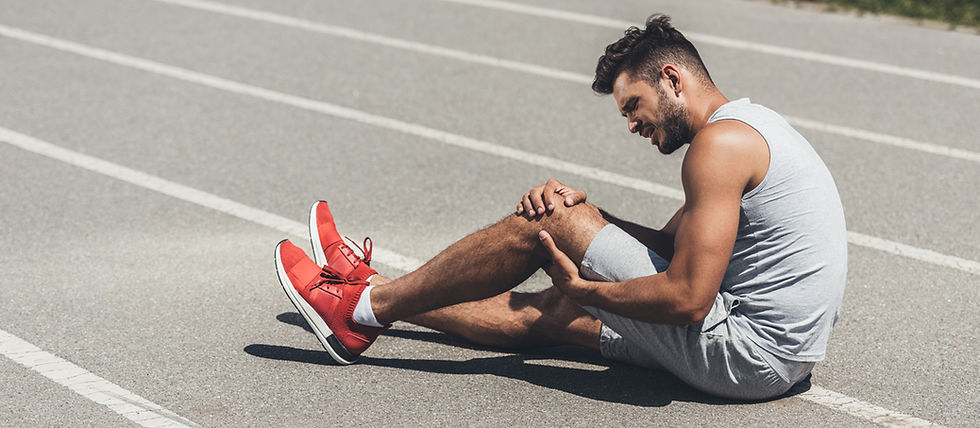Runner's Knee, Whats all the pain about?
- Henry Fensome M.Ost
- May 4, 2019
- 3 min read

What is it?
Runners knee, more scientifically known as patellofemoral pain syndrome (PFPS), is a condition which affects the cartilage on the underside of the knee cap (Patella) and the structures which support is, as it moves up and down and over the groove on the femur (Thigh Bone) when you bend and straighten your knee. The injury occurs in both amateurs and professional runners, with some statistics showing it accounts for 50% of all running injuries.

What Are The Symptoms?
Pain around or under your knee cap
Pain that is aggravated primarily when running down hill
Dull pain when running on uneven terrain.
Pain when you push on your knee cap
What Causes it?
Injury occurs where there is 'Mal-Tracking' of the knee cap in the femoral groove and a chronic stimulation of the pain nerves in the surrounding area. The 'Mal-Tracking' may be due to a number of factors such as; the alignemebt of your leg, and abnormal muscle forces. Poor strength and flexibility in the hips, hamstrings and quadriceps have all been shown to contribute to this problem. However, training errors are the primary culprit. This can include an accelerated build-up of mileage, as well as excessive high-intensity running or hill work. Worn out and inappropriate footwear is also cited as a possible cause.
How do I fix it?
The first thing to do is rest, along with the use of ice and non-steroidal anti-inflammatories (NSAIDs), this will help to reduce pain and swelling in the short term. Kinesiology taping can also help with better patella movement and reduce pain, again this is only a short term affect but will help you to continue your rehab.
Research shows that strengthening the hip/buttock muscles, specifically the hip adductors and the gluts, can reduce pain in Patellofemoral Pain Syndrome. Exercises for this may include; squats, crab walks and bridges. Improving flexibility in the leg, especially the hip flexors is essential. Seeing a professional such as an Osteopath or Physio is also an important component for reducing pain around the knee and mobilising the joins and the soft tissue structures. Remember that cutting back on mileage, or even taking a complete break from running will be important. A graduated progression back into training can be discussed with your Osteopath as you work through your rehab programme. Some runners find that up hill running or simulating hills on treadmills is less painful. Uphill running has the added value of working your glutes. Strong gluteal muscles help control hip and thigh movemnt, preventing the knee from turning inwards. Cycling and swimming are other 'Knee Friendly' activities for cross-training.
How can I prevent it?
It is also important to be proactive with prevention measures, especially if you've suffered from runners knee in the past. Implementing a regular strength and flexibility routine she be the focus. Strengthening the hips, glutes, quads and hamstrings improves overall stability and helps the kinetic chain function better - reducing load on the knee joint and aiding support of the joint. Listen to your body and respond at the first sign of discomfort. Runners knee is an injury that worsens if you continue to run on it. Building mileage slowly will help ensure you remain healthy. Do not increase your mileage by more than 5-10% from one week to the next. Avoiding excessive downhill running is also a good thing to do if you're hoping to skirt injury.



If you’re wondering about gambit casino bonus, I’d say it’s got a very distinctive style — kind of dark, almost mysterious, which gives the whole experience a unique edge. It’s not just about looks though; the casino is regulated by the UK Gambling Commission, so you can trust the fairness and security. I played their slots and live dealer games, and they run smoothly, powered by industry leaders like NetEnt and Evolution. The bonuses are clear and easy to understand, which I appreciate. The theme might feel intense for some, but if you like a casino that’s a bit different and atmospheric, 666 Gambit delivers that vibe really well.